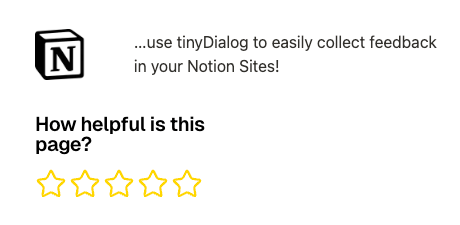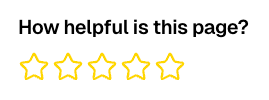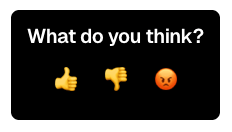How to add a Feedback Widget to your Notion Pages

Adding a feedback widget to your Notion pages is a game-changer for understanding what works and what doesn't in your documentation, knowledge bases, or team resources. In this comprehensive guide, I'll walk you through the process of adding tinyDialog feedback widgets to your Notion pages, helping you gather insights directly from your readers without any technical expertise required.
Why You Need a Feedback Widget on Your Notion Pages
Notion has become an essential tool for documentation, knowledge bases, wikis, and team collaboration. It's great for quickly publishing user-facing pages like documentation or how-tos, but still lacks native feedback capabilities. Without a feedback mechanism, you're missing out on valuable insights that could help you improve your content and its helpfulness for readers.
Adding a feedback widget to your Notion pages offers several key benefits:
- Real-time insights from readers while they're actively engaging with your content
- Identification of unclear or outdated pages that might be confusing your readers
- Opportunity to build stronger relationships with users by engaging them into your content
- Data-driven approach to improving content quality based on actual user experiences
- Competitive advantage over others who don't collect feedback on their Notion pages
Whether you're using Notion for documentation, knowledge bases, client portals, or team resources, a well-utilized feedback widget can help you improve your content for users.
What is tinyDialog?
tinyDialog is a customizable feedback solution designed to integrate seamlessly with platforms like Notion (or your Website). Unlike complex and expensive enterprise feedback systems that require deep technical knowledge, tinyDialog offers a user-friendly approach to collecting valuable insights from your readers and users.
Key features that make tinyDialog perfect for Notion integration include:
- Easy embedding perfect for non-technical Notion users
- Customizable appearance to match your Notion aesthetic and branding
- Multiple feedback collection methods including star ratings, NPS, emoji reactions, text responses, and more
- Data connectors to instantly forward responses to other tools like Zapier, Slack, Email, Discord, Airtable, and many more
- AI-powered topic-detection to extract and filter trends from your feedback automatically
- Anti-bot protection to reduce spam responses
- Localization support for global audiences and customized brand-wording
With these features, tinyDialog stands out as an ideal all-in-one solution for Notion users looking to enhance their pages with feedback capabilities.
You can check out a demo here: Notion Page
And read the full docs for the Notion Reactions Integration in our Knowledge Base
Sign-up now and start collecting insights for free!
Advanced tinyDialog Features for Notion
Connecting tinyDialog Responses to Your Workflow
One of tinyDialog's advantages is its ability to integrate with your existing workflow tools.
Examples are:
- Slack and Discord integration: send new feedback into your team's chat
- Email alerts: receive a real-time, daily, or weekly digest with new feedback
- Airtable connection: automatically store feedback responses in your Airtable and organize it
- Webhook support: connect the most-powerful workflow automation tools like Zapier or n8n and process it further
These integrations help you act on feedback quickly, turning insights into improvements without tedious manual data transferring.
Analyzing Feedback with tinyDialog's AI Tools
tinyDialog's AI-powered analysis tools help you make sense of the feedback you collect. The AI topic detection feature automatically categorizes text-feedback by theme and text-sentiment and lets you filter responses accordingly. This helps you prioritize and focus on areas that are your customer's biggest pain-points.
Real-World Use Cases for collecting feedback on Notion
Documentation Improvement Workflow

Software companies can use tinyDialog on their Notion documentation to identify unclear parts in their documentation. By collecting specific feedback on each page, they can, for example, discover that their API documentation is confusing to new users. After revising based on the feedback, they can periodically check their metrics and monitor if the average feedback improves and support tickets decrease.
Notion Reactions with Emojis

For quickly gauging user-sentiment below your blog posts or informational notion sites, you can use an Emoji-Reaction Notion-widget powered by tinyDialog. The Emojis are customizable and can either be serious thumbs-up and thumbs-down emojis, ore a more playful set like different emoji faces. These emoji reactions embedded into your Notion Page, can engage readers in a playful and super-easy way.
Best Practices for Maximizing Feedback Quality
To get the most valuable feedback through your tinyDialog widgets on Notion:
- Ask specific questions rather than general ones to get actionable insights
- Ask general questions rather than specific ones to gather general user sentiment and find areas to improve
- Place widgets strategically at points where feedback is most relevant (like at the bottom of your page)
- Follow up on feedback to show readers their input is valued (you can ask users for their contact-information using an additional optional field in tinyDialog)
- Update content based on feedback, note the changes made, and follow-up by checking changes in metrics after your edits
- Rotate questions periodically to gather different types of insights and see what works best for your specific audience
These practices help ensure that the feedback you collect is high-quality and actionable, leading to meaningful improvements in your published Notion sites.
Step-by-Step Guide to Adding tinyDialog to Your Notion Pages
1. Creating Your First tinyDialog Survey
Getting started with tinyDialog is straightforward. Here's how to create your first survey in a minute:
- Sign up for a tinyDialog account at tinydialog.com and get started for free
- Click on the pre-created default project and then the "Create Survey" button inside the project
- Chose a survey type and enter a survey question / title
- Optionally, further customize your survey's behavior and design to match it to your branding
- Save your survey
When designing your survey, keep the texts concise and focused on one- or few-specific aspects of your content that you want feedback on. This ensures higher response rates and more actionable insights.
2. Adding the Widget to Your Notion Page
Once you've created and customized your survey, you can add it to your Notion page and gather Notion-reader reactions:
- In the tinyDialog Dashboard, open the "Setup & Connections" tab of your survey
- Copy the survey's unique ID
- Open your Notion page where you want to add the feedback widget
- Type
/embedto bring up the embed block option - In the embed block options enter the following URL:
https://app.tinydialog.com/widget/v1/<your unique survey ID> - Confirm by clicking the "Embed link" button
- Adjust the size and position of the embed block in the Notion page
Your tinyDialog widget now appears on your Notion site, ready to collect feedback from your readers. The process is that simple. No coding or technical skills required, and you're good to go to collect Notion Reactions!
Frequently Asked Questions
Can I use one tinyDialog widget across multiple Notion pages? Yes, you can embed the same widget on multiple pages. This is useful for collecting consistent feedback across your entire workspace.
How do I view and export feedback responses? Responses are available in your tinyDialog dashboard and can be exported in various formats including CSV (Excel-compatible) and Data Connectors to 3rd party services like Zapier, Airtable, or Slack.
Can I customize the appearance of the widget? Absolutely! tinyDialog offers extensive customization options for colors, text, and button styles to match your Notion aesthetic. If you're a Pro, you can even customize the CSS.
Can I use tinyDialog on public Notion pages? Yes, tinyDialog works on both private and public Notion pages, making it ideal for documentation and knowledge bases shared externally.
Conclusion
Adding a tinyDialog feedback widget to your Notion pages is a simple yet powerful way to gather insights directly from your readers. With no technical skills required, you can set up a customized feedback system that integrates seamlessly with your Notion workspace and existing tools or flows.
By collecting and acting on reader feedback, you'll create more valuable, user-friendly Notion pages that truly meet the needs of your audience. Whether you're managing documentation, knowledge bases, or team resources, tinyDialog can help you understand what's already working and what needs improvement.
Get started for free and sign up now